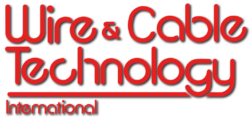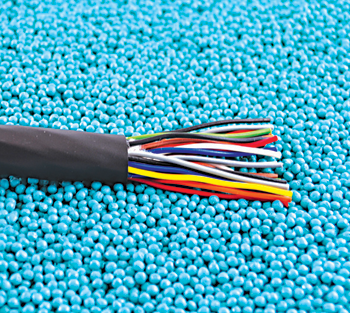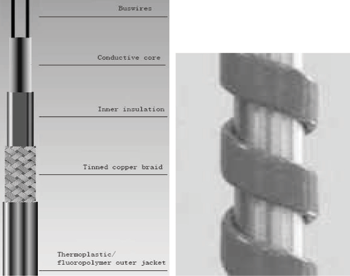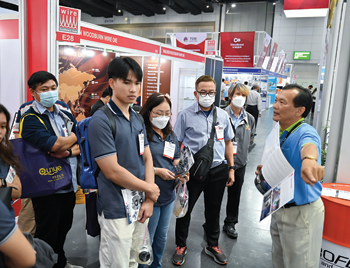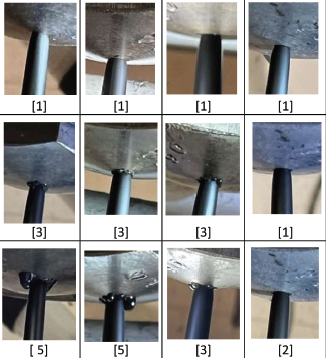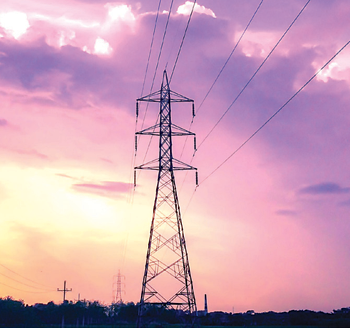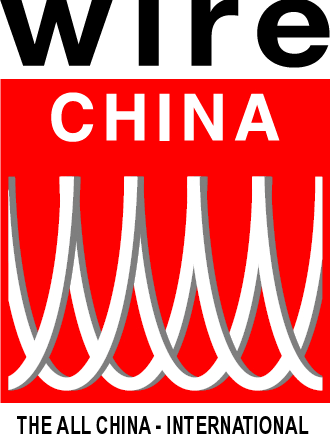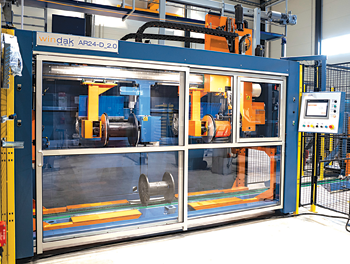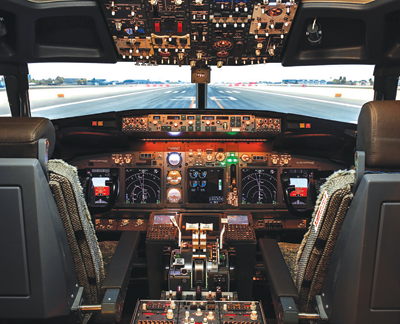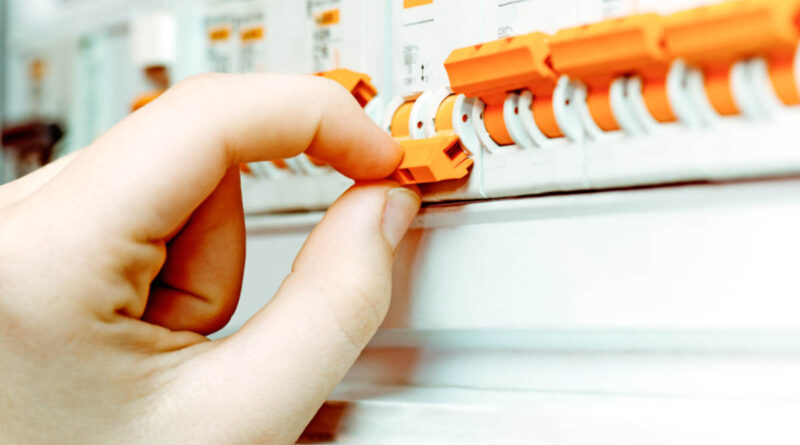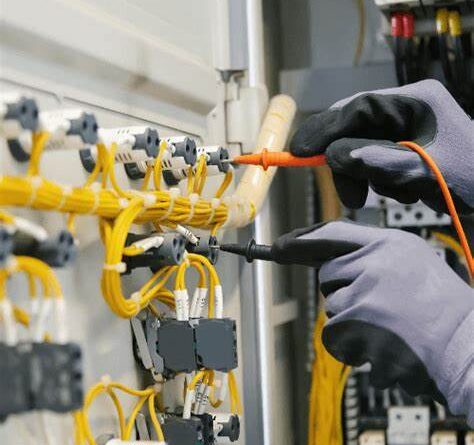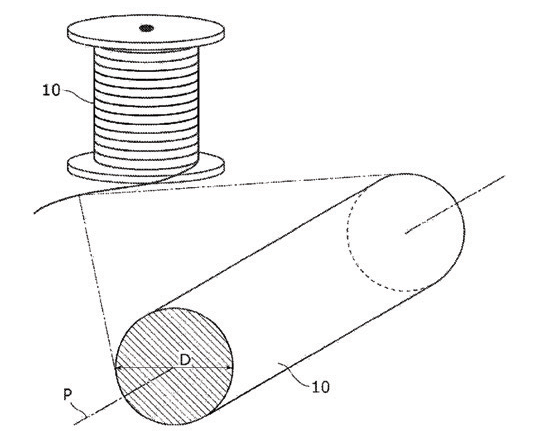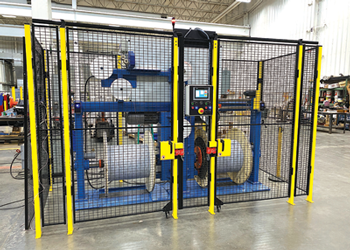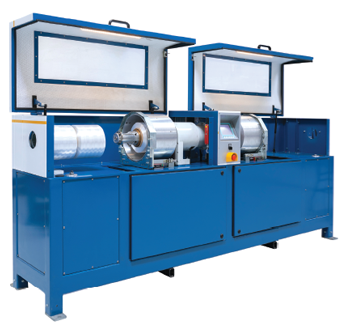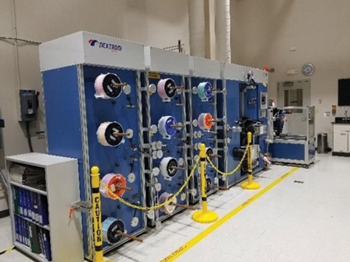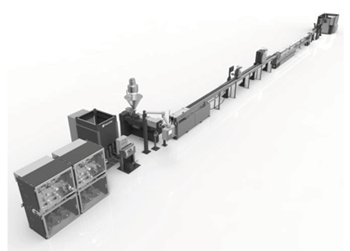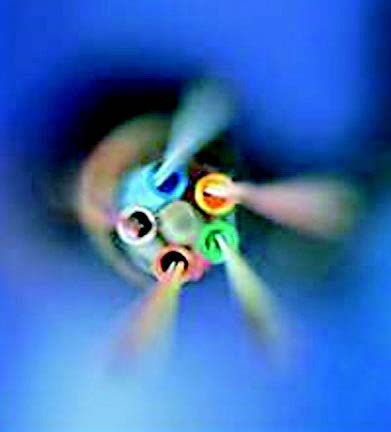November/December
Efficient Cable Insulation & Impeccable Spark Test Results
Color masterbatch producer reduces
granule size tenfold to improve dilution of the masterbatch in the cable compound
New Advancement in the Polyvinylidene Fluoride (PVDF) Materials
For many years, PVDF polymers have been used in high-performance cable applications including plenum communication cables, automotive cables, aviation and military cables and appliance wiring. The selection of PVDF polymers is largely due to a unique combination of properties, including flame and smoke resistance, abrasion resistance, high flexibility, chemical resistance, outdoor weathering resistance and the ability to be e-beam crosslinked. The wide range of useful properties provided by PVDF polymers helps make them a valuable tool for resolving unique problems under challenging applications. PVDF polymers available include both homopolymers and copolymers.
Read MoreStraight From the Show News & Images from wire Southeast Asia 2023
From September 20 to 22, 2023, BITEC in Bangkok, Thailand was abuzz with industry professionals, showcasing the vibrancy of the
Read MoreFluoropolymer Processing Aid Replacement in Cable Jacketing Compounds
Black polyethylene jacket compounds are widely used in the wire and cable industry for telecommunication and power cable applications. However, these filled polyethylene compounds are susceptible to die build-up during the extrusion process. Die build-up (DBU) refers to the unwanted accumulation of material on the open face of the extrusion die, which can lead to die streaking on the surface of the extruded product as well as additional time and cost to shut down the line and clean the tooling. Excessive die build-up negatively impacts the aesthetic quality and properties of the final product, posing a challenge for the wire and cable as well as the plastic industry.
Read MoreRange of Metal Deactivators for Wire & Cable Applications
Auto-oxidation reactions in plastics are initiated and accelerated not only by heat, light and mechanical stress, but also by contact with metals. Applications that come into contact with metal include polyolefin insulations for wire coatings, automobile parts and pipes as well as, elastomeric compounds for coatings and insulation. Metal deactivators are used as polymer additives to control the metal-catalyzed oxidation of these hydrocarbon materials, thereby improving the stability of these polymers, including their long-term stability in these applications.
Read MoreComposite Conductor Cores Connecting the Future
ccording to Bill Gates, over 1000 gigawatts of clean energy projects—approximately the current size of the entire USA power grid—are awaiting approval. Despite huge potential, infrastructure work on this scale is a huge undertaking so intelligent engineering and efficient design will be essential for return on investment for utilities providers. This article explains how composite conductor cores can extend maintenance intervals, reduce infrastructure costs and improve performance for power line installations
Read MoreEquipment Revolutionizes Solar Cable Package for Sustainable Energy Sector
by Olga Berlinberg, WINDAK OÜ Global demand for high-quality solar cables has surged with the shift towards renewable energy sources
Read MoreAerospace Wire and Cable Applications
Aerospace wire and cable applications are essential for transmitting power, data and signals throughout various aircraft and spacecraft systems. These components are subject to rigorous standards and requirements due to the extreme conditions and safety considerations in aerospace engineering.
The AS9100:2016 quality management system (QMS) is a necessary certification when manufacturing aerospace harnesses and assemblies. It is a revision of the previous version, AS9100:2009, based on the international QMS standard ISO 9001.
Read MoreClarifying the Changes: Update on Revisions to UL Certification Documents,
A review of upcoming standards proposals and recently published revisions is important, so that both manufacturers and users are aware of the changes, understand the ramifications of the changes and may take the appropriate steps to ensure that the wire and cable manufactured to these standards continue to comply with the requirements.
Read MoreMeasurement of 10 GΩ Isolation at 100V: New External Measurement Device Option
Margaret Bishop, Technical Marketing at CAMI Research Inc., Acton, MA, USA, the manufacturer of the CableEye® automation-ready cable and harness
Read MoreCabling for Fault-Managed Power Systems (What is Class 4?)
by Ronald Tellas, Belden Remote powering enables the ability to easily place end devices where they are needed instead of
Read MorePatents for November/December 2023
USPTO Wire & Cable Industry Patents as compile by the editors of WCTI for November 2023. Methods For Bonding Stranded
Read MoreOvercoming Fiber Optic Production Challenges with Exciting Solutions
The MGS Group has worked intimately within the fiber optic industry as it has developed in the past four decades.
Read MoreInline Surface Dimensional Flaw Detection and OD/Ovality Measurement Using Laser Line Triangulation on Round Product
There are advantages and disadvantages to every type of inspection method. When it comes to tight-tolerance, highspeed, continuous production of round, opaque
Read MoreApplying Binder Yarns with Low and Constant Tension at High Speed Sets High Demands to the Quality of the Equipment and the Binder Yarn Material
To achieve optimum binding process requires knowledge about both the binder and material. With several decades’ experience within fiber optic cable machinery
Read MoreDevelopment of LED Inks for Optical Fiber Applications
Microwave powered, mercury-based UV lamps have historically been the primary resource when curing inks used for optical fiber. They offer a broadband
Read MoreArtificial Intelligence-Based Line Control and Predictive Maintenance Increases Productivity
The global demand for optical fiber cables is increasing at a growing rate. At the same time this market has
Read MoreThe Automotive Supply Chain Demands a New Type of Cable Designed for Electric Mobility Applications
Electric mobility is a transformation that goes beyond the automotive sector. Individuals, businesses and public entities are looking for common
Read More